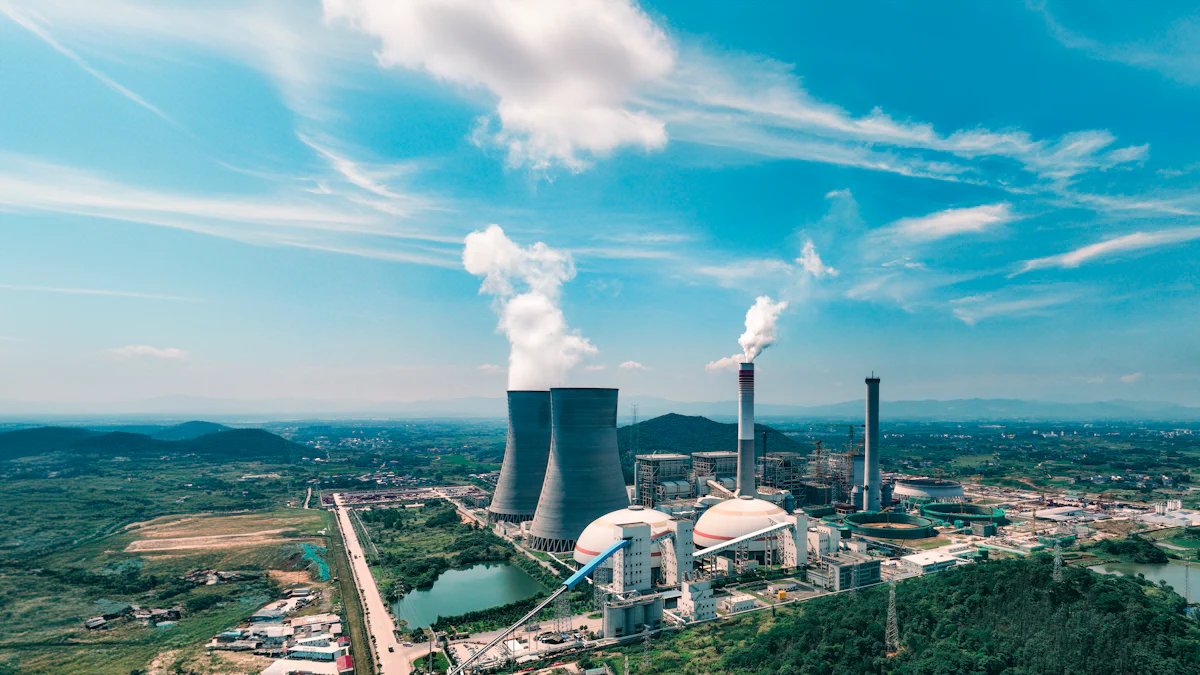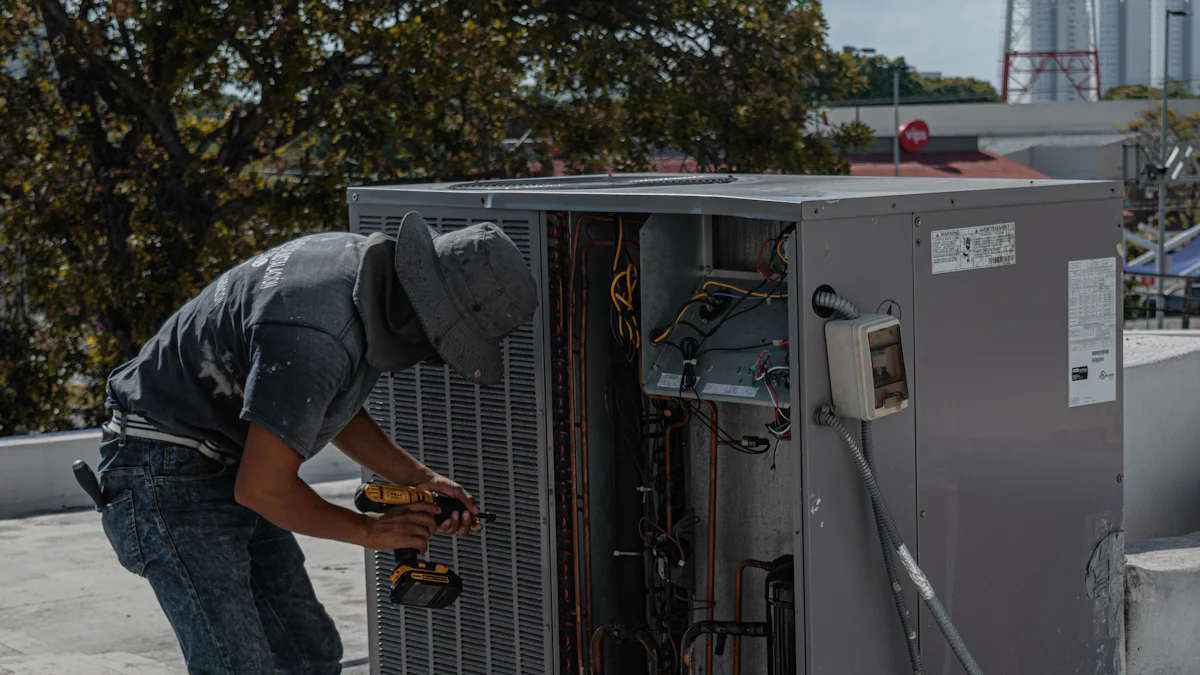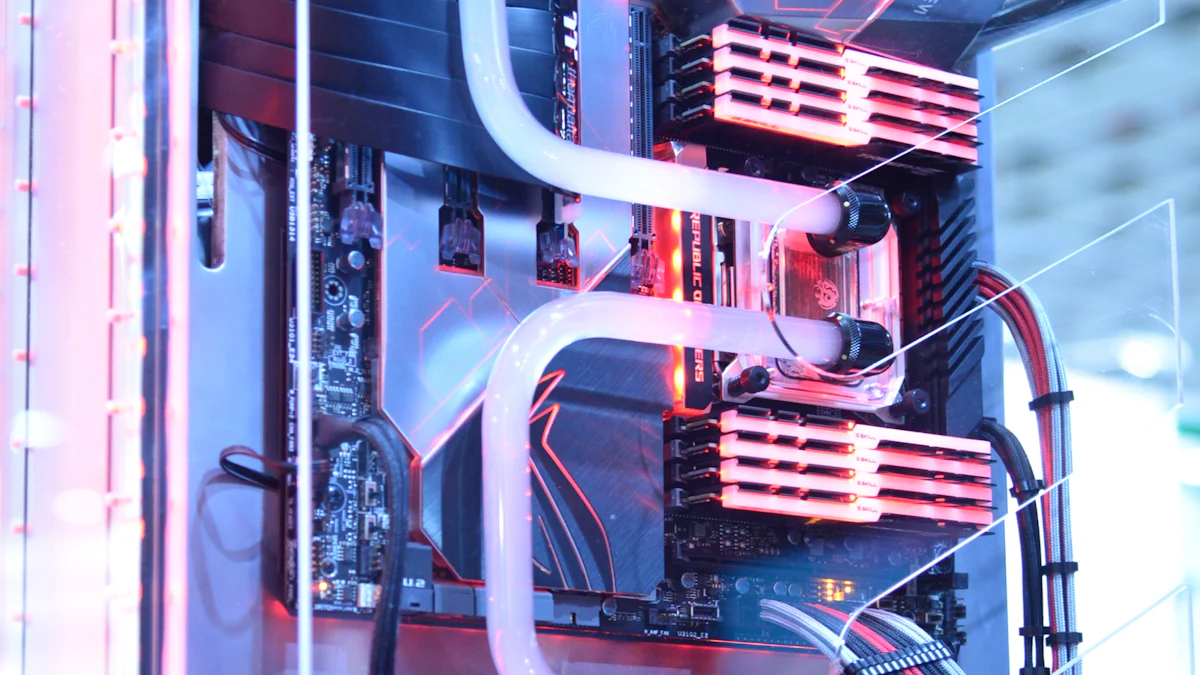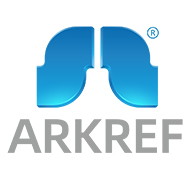Understanding CO2 Refrigeration Equipment and Its Functionality

CO2 refrigeration equipment uses carbon dioxide (R744) as a refrigerant to cool spaces or preserve products. You’ll find these systems especially useful in industries like food retail and cold storage, where energy efficiency and sustainability are critical. Unlike traditional systems, CO2 refrigeration operates with zero Ozone Depletion Potential (ODP) and a Global Warming Potential (GWP) of just 1. This makes it an environmentally friendly alternative to synthetic refrigerants like R410A, which have significantly higher GWPs. The refrigeration cycle involves phases like supercritical vaporization, throttling, and subcritical condensation, ensuring efficient cooling while reducing greenhouse gas emissions.
Why CO2 is Used in Refrigeration
Environmental Benefits
CO2 refrigeration equipment offers significant environmental advantages compared to traditional systems. Carbon dioxide (R744) has a Global Warming Potential (GWP) of 1, which is the baseline for measuring the climate impact of greenhouse gases. In contrast, synthetic refrigerants like R410A and R32 have GWPs of 2,100 and 771, respectively. This means CO2 has a much smaller impact on global warming. Additionally, CO2 has zero Ozone Depletion Potential (ODP), making it a safer choice for the environment. By using CO2 systems, you contribute to reducing harmful emissions and supporting global sustainability efforts.
Refrigerant | GWP Value |
|---|---|
CO2 (R744) | 1 |
R410A | 2,100 |
R32 | 771 |
Efficiency Advantages
CO2 refrigeration systems are not only eco-friendly but also highly efficient. These systems operate at high pressures, which improves heat transfer and reduces energy consumption. In fact, modern CO2 systems can be up to four times more energy-efficient than traditional refrigeration methods. For businesses like supermarkets, this translates to energy savings of 5% to 18%, depending on factors like system design and ambient temperature. Over time, these savings lower operating costs and make CO2 refrigeration equipment a cost-effective solution for cooling needs.
Industry Trends and Regulations
The adoption of CO2 refrigeration systems is growing rapidly due to evolving industry regulations and market trends. Policies like the Kigali Amendment to the Montreal Protocol and the American Innovation and Manufacturing (AIM) Act promote the use of low-GWP refrigerants like CO2. For example, the AIM Act mandates a 40% reduction in hydrofluorocarbon (HFC) production and consumption by 2024. In Europe, government incentives encourage businesses to switch to sustainable cooling technologies. Globally, regions like North America and Asia-Pacific are experiencing significant growth in CO2 system adoption, driven by environmental regulations and the demand for green technologies.
Region | Key Trends | Market Value Projection |
|---|---|---|
North America | Significant growth driven by environmental regulations and demand for green technologies. | $1.2 billion by 2025 |
Europe | Pioneering CO2 systems with government incentives; leading in sustainability efforts. | Over $600 million by 2024 |
Asia-Pacific | Rapid growth due to industrialization and supportive policies in commercial and residential sectors. | Over 15% annual growth |
By staying informed about these trends and regulations, you can make smarter decisions when choosing refrigeration systems for your business.
Key Components of CO2 Refrigeration Equipment

Understanding the main components of CO2 refrigeration equipment helps you appreciate how these systems deliver efficient and sustainable cooling. Each part plays a critical role in ensuring the system operates effectively under high-pressure conditions.
Compressors
Compressors are the heart of any refrigeration system. They compress the CO2 refrigerant, increasing its pressure and temperature to prepare it for heat exchange. In CO2 refrigeration equipment, several types of compressors are commonly used:
Rolling Piston Compressors
Swing Piston Compressors
Scroll Compressors
Vane Compressors
Screw Compressors
Each type has unique advantages. For example, scroll compressors are compact and efficient, making them ideal for commercial applications. Screw compressors, on the other hand, handle larger capacities and are often used in industrial systems. Choosing the right compressor depends on your specific cooling needs and the scale of your operation.
Heat Exchangers
Heat exchangers play a vital role in improving the efficiency of CO2 refrigeration systems. Internal heat exchangers (IHXs) are particularly effective. They enhance the system's coefficient of performance (COP) by transferring heat between high- and low-pressure circuits. This process can boost COP by up to 10% in transcritical CO2 cycles, especially in residential air conditioning. Studies also show that IHXs improve energy efficiency by 5.71% and exegetical efficiency by 5.05% in hot climates. By incorporating IHXs, you can optimize your system's performance while reducing energy consumption.
Expansion Valves
Expansion valves regulate the flow of CO2 refrigerant as it transitions from high to low pressure. This step is crucial for maintaining the system's cooling efficiency. CO2 systems require specialized expansion valves to handle their high operating pressures. Most of these valves are electronic and use integrated stepper motors for precise control. To ensure proper operation, you need external drivers and controllers, which must be installed within 30 to 100 feet of the valve. Additionally, the design must include tubing and valves rated for high-pressure applications, along with a clear path to safety relief valves to manage pressure excursions.
By understanding these components, you can make informed decisions about designing, operating, and maintaining your CO2 refrigeration equipment.
Piping and Storage
Piping and storage are critical components of CO2 refrigeration equipment. These elements ensure the safe and efficient transport and containment of the refrigerant, which operates under high-pressure conditions. Selecting the right materials for piping and storage is essential to maintain system integrity and performance.
Due to the high density and pressure of CO2, all piping and storage components must meet strict pressure ratings. Stainless steel, particularly SS304L, is a popular choice for CO2 refrigeration piping. This material handles high pressures effectively and resists corrosion, making it a durable option. Copper piping can also be used in some cases, but only if it meets high-pressure requirements.
If you choose high-pressure iron copper piping, ensure that all fittings and tubing are rated for high-pressure applications. This precaution minimizes the risk of leaks or failures.
Storage tanks for CO2 refrigerant must also withstand extreme pressures. These tanks are typically made from high-strength steel or stainless steel. They are designed to handle the unique properties of CO2, including its ability to transition between liquid and gas phases under varying temperatures and pressures. Proper insulation is another key factor. It prevents heat transfer, which could lead to pressure fluctuations and inefficiencies in the system.
When designing your system, you should also consider the layout of the piping. Shorter and more direct piping routes reduce pressure drops and improve energy efficiency. Additionally, all piping and storage components must include safety features like pressure relief valves. These valves protect the system by releasing excess pressure during unexpected surges.
By choosing the right materials and ensuring proper installation, you can enhance the reliability and longevity of your CO2 refrigeration equipment. This attention to detail not only improves performance but also ensures compliance with safety standards.
How CO2 Refrigeration Equipment Operates

The Refrigeration Cycle
The refrigeration cycle in CO2 refrigeration equipment follows a series of steps to transfer heat and achieve cooling. It begins with the compressor, which pressurizes the CO2 refrigerant, raising its temperature. The refrigerant then moves to the heat exchanger, where it releases heat to the surrounding environment. This process cools the refrigerant, preparing it for the next stage.
Next, the refrigerant passes through the expansion valve. Here, its pressure drops significantly, causing it to cool further. This low-pressure, cold refrigerant absorbs heat from the space or product you want to cool. Finally, the refrigerant returns to the compressor, and the cycle repeats. This continuous process ensures efficient cooling while maintaining the system's high performance.
CO2 systems operate under unique conditions due to the refrigerant's properties. The critical point of CO2 is 87.8°F and 1,070 psi. Depending on the operating conditions, the system may function in either transcritical or subcritical mode, which impacts its efficiency and design.
Transcritical vs. Subcritical Systems
CO2 refrigeration systems can operate in two distinct modes: transcritical and subcritical. The mode depends on whether the system operates above or below CO2's critical point.
Mode | Operating Condition |
|---|---|
Transcritical | Above the critical point (87.8°F, 1,070 psi) |
Subcritical | Below the critical point |
Transcritical systems operate above the critical point, making them ideal for warmer climates. These systems include a gas cooler instead of a condenser and use a high-pressure expansion valve. They also allow for heat reclamation, which can improve energy efficiency. Subcritical systems, on the other hand, function below the critical point. They are better suited for colder climates and low-temperature applications like cold storage. These systems operate at lower pressures, simplifying their design and reducing maintenance requirements.
When choosing between these systems, consider your climate and application needs. Transcritical systems excel in regions with higher ambient temperatures, while subcritical systems perform best in colder environments. Both options offer sustainable and efficient cooling solutions, making CO2 refrigeration equipment a versatile choice for various industries.
Design Considerations for CO2 Refrigeration Equipment
Designing CO2 refrigeration equipment requires careful planning to ensure safety, efficiency, and reliability. You need to account for the unique properties of CO2, including its high operating pressures and sensitivity to ambient temperatures. Additionally, tailoring the system to your specific application ensures optimal performance.
High-Pressure Requirements
CO2 refrigeration systems operate under significantly higher pressures than traditional systems. This requires components rated for maximum working pressures, often between 120 PSIG and 1,300 PSIG. For subcritical systems, pressures remain below 1,071 PSIG, while supercritical systems exceed this threshold. Proper material selection is critical. Stainless steel, such as SS304L, is a popular choice for piping due to its ability to withstand high pressures and resist corrosion.
Smaller pipe diameters can be used because CO2 has a higher density than other refrigerants. However, you must ensure an uninterrupted path to the safety relief valve to manage pressure excursions. Electronic expansion valves (EEVs) are essential for precise control in direct expansion applications. A detailed controls plan is necessary to integrate these components effectively.
Aspect | Details |
|---|---|
Typical Pressure Range | |
Subcritical Operation | Below 1,071 PSIG |
Supercritical Operation | Above 1,071 PSIG |
Material Recommendations | SS304L for piping |
Climate and Ambient Temperature
Ambient temperature plays a significant role in the performance of CO2 refrigeration systems. High temperatures can limit the system's efficiency, especially in transcritical operations. For example, the gas entering the valve may range from 560 to 1,450 PSIG, depending on the ambient conditions. Regardless of these conditions, the gas exits the valve at approximately 540 PSIG. In warmer climates, you may need additional components, such as gas coolers, to maintain efficiency.
If your system operates in a colder climate, subcritical systems are more suitable. These systems perform well at lower pressures, simplifying their design and reducing energy consumption. Understanding your local climate helps you choose the right system for your needs.
Application-Specific Customization
Every application has unique cooling requirements. Customizing your CO2 refrigeration equipment ensures it meets these demands. For example, supermarkets may prioritize energy efficiency and heat recovery, while industrial facilities might focus on capacity and durability. You can adjust system components, such as compressors and heat exchangers, to match your specific needs.
Additionally, consider the layout of your facility. Shorter piping routes reduce pressure drops and improve energy efficiency. Proper insulation minimizes heat transfer, ensuring consistent performance. By tailoring the design to your application, you can maximize the benefits of CO2 refrigeration equipment.
Maintenance and Lifespan of CO2 Refrigeration Equipment
Routine Maintenance
Routine maintenance ensures your CO2 refrigeration equipment operates efficiently and safely. Start by charging the system with CO2 vapor until the pressure reaches 60.4 psi. Once this level is achieved, switch to liquid CO2 to complete the charging process without risking dry ice formation. Leak detection is another critical step. Since CO2 is colorless and odorless, use leak detection systems mounted 18 inches off the ground for immediate identification and mitigation of leaks.
When servicing the system, technicians should follow best practices. Handle CO2 carefully due to its high standstill pressures. Always wear personal protective equipment (PPE) to avoid skin burns from low temperatures. Avoid working in confined spaces, as CO2 can displace oxygen and create hazardous conditions. Regular inspections and adherence to these practices will help you maintain the system's performance and safety.
Longevity and Durability
CO2 refrigeration equipment is designed for durability, but proper care extends its lifespan significantly. High-pressure components, such as compressors and piping, are built to withstand the unique demands of CO2 systems. However, regular inspections are essential to identify wear and tear early. Replace worn parts promptly to prevent system failures.
Material selection also impacts durability. Stainless steel piping, for example, resists corrosion and handles high pressures effectively. Proper insulation minimizes heat transfer, reducing strain on the system. By prioritizing maintenance and using high-quality materials, you can ensure your equipment remains reliable for years.
Emerging Technologies
Advancements in CO2 refrigeration technology continue to improve efficiency and reliability. Transcritical CO2 systems now handle high pressures and temperatures more effectively. Ejectors have emerged as a key innovation, recovering and utilizing pressure energy to enhance system performance. Parallel compression is another breakthrough, offering significant energy savings in warmer climates.
High-pressure components have also evolved, ensuring better durability and safety under extreme conditions. These innovations make CO2 refrigeration equipment a forward-thinking choice for businesses seeking sustainable and efficient cooling solutions.
CO2 refrigeration equipment offers a sustainable and efficient solution for modern cooling needs. Its environmental benefits are undeniable: a global warming potential of just 1, zero ozone depletion potential, and a significant reduction in greenhouse gas emissions. These systems actively combat climate change and promote a healthier planet.
Proper design and regular maintenance ensure these systems operate effectively for decades. Routine inspections prevent minor issues from escalating, while CO2’s resistance to corrosion enhances durability. By investing in robust design and upkeep, you maximize performance and extend the lifespan of your equipment.
As a natural refrigerant, CO2 aligns with global sustainability goals. Its low environmental impact reduces the carbon footprint of refrigeration systems, making it a key player in achieving eco-friendly cooling solutions. Choosing CO2 refrigeration equipment means contributing to a greener future while meeting your cooling demands efficiently.
See Also
The Advantages of CO₂ Transcritical Refrigeration Systems
A Deep Dive into ARKREF CO₂ Refrigeration Innovations
CO₂ Refrigeration: An Eco-Friendly Cooling Alternative
Get to Know the ARKREF CO₂ Refrigeration Unit
Complete Guide to ARKREF CO₂ Transcritical Refrigeration Units

